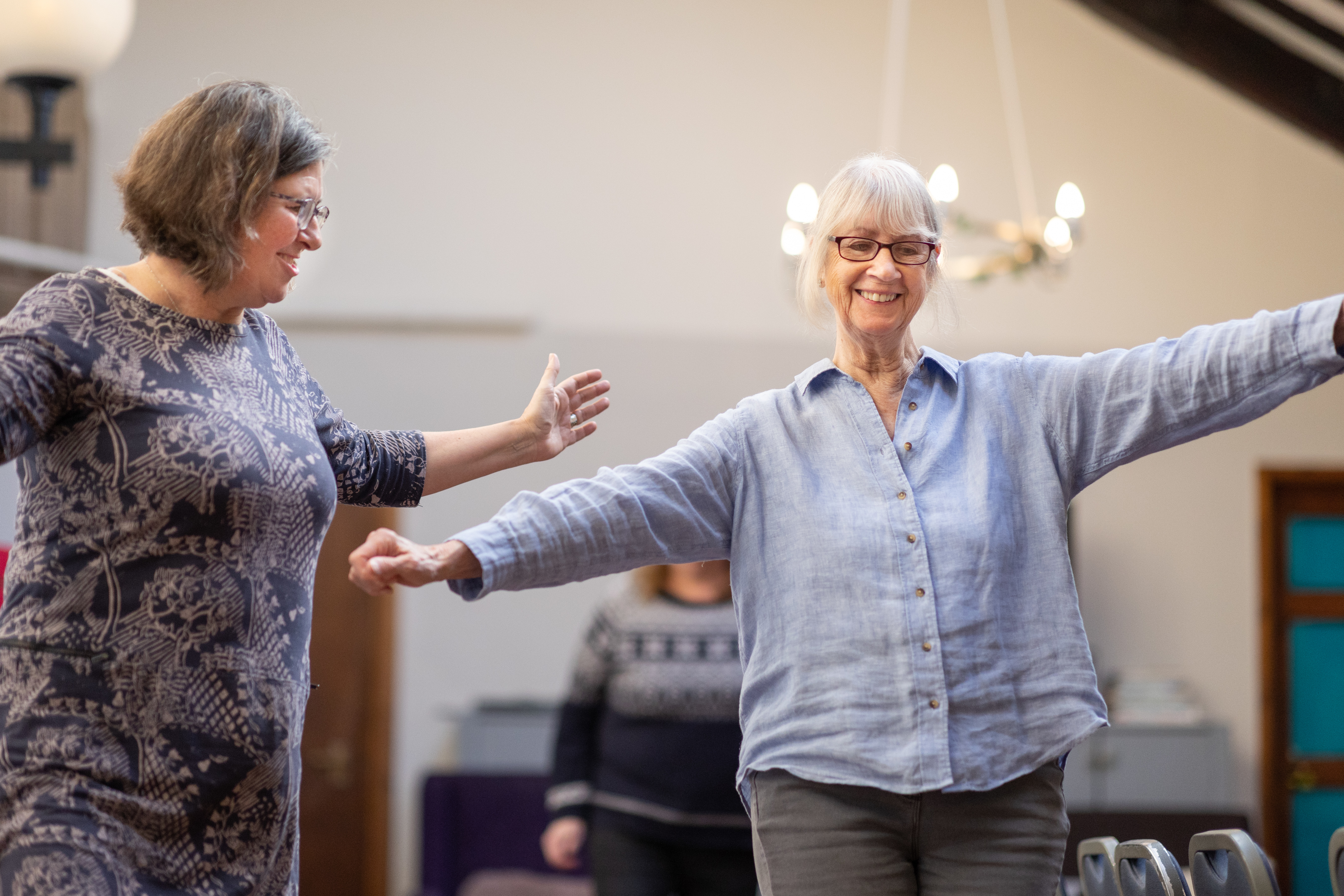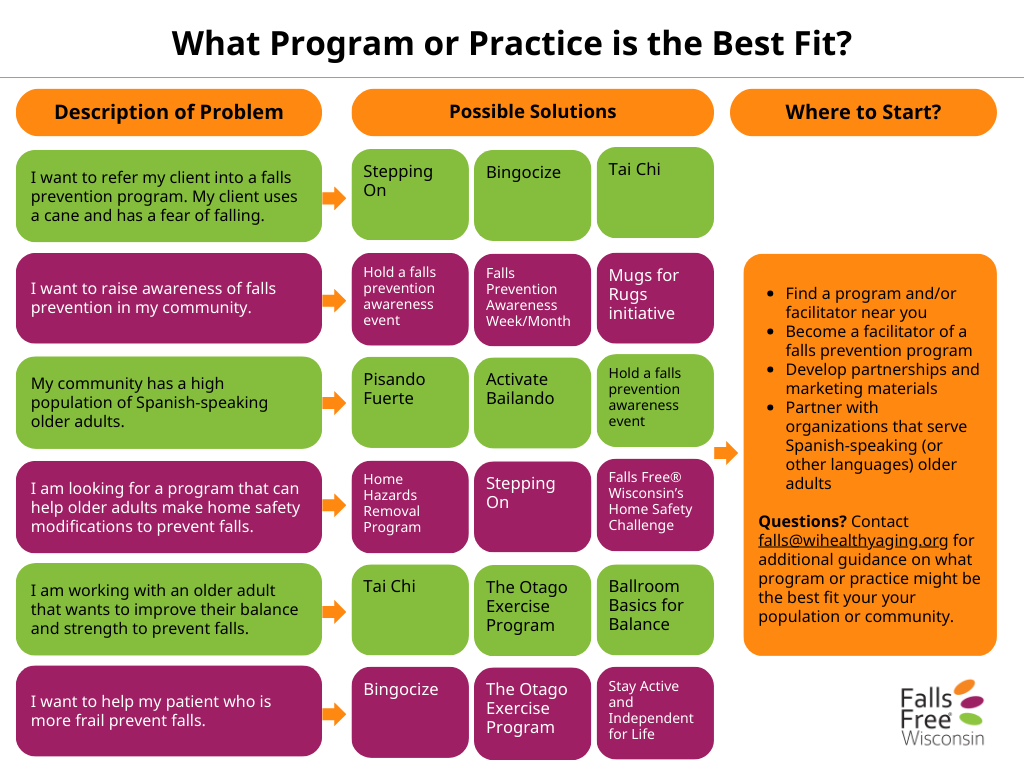Improving our balance and increasing strength can have a noticeable impact on our risk of falls.
In fact, we recommend following the Physical Activity Guidelines for Americans for older adults, which includes:
- About 3 days a week of activities that improve balance (daily is even better!)
- At least 2 days a week of activities that strengthen all major muscle groups (legs, hips, back, abdomen, chest, shoulders, and arms)
- At least 150 minutes a week of moderate-intensity activity (such as walking) or 75 minutes a week of vigorous-intensity activity (such as hiking, jogging, or running).
Physical activity is extremely important to help us continue to be able to do our daily activities as we age without having to depend on others. Strengthening our muscles is essential for keeping our bones and muscles healthy as we age.
The Strong Steps: Improve Strength and Balance to Prevent Falls document highlights balance and strength exercises we can do! See images below and download the packet for specific instructions.
Balance Exercises
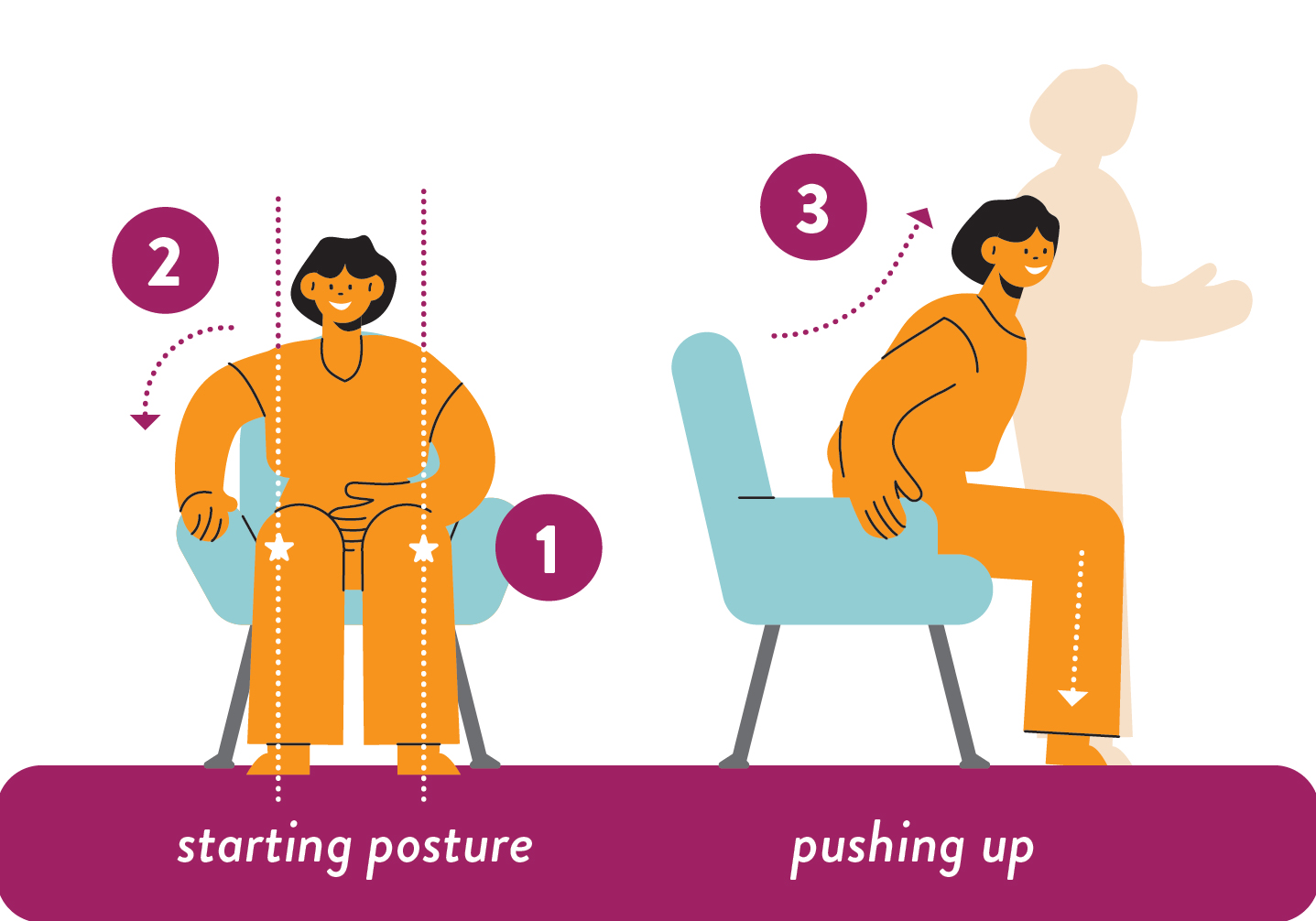
Sit-to-Stand
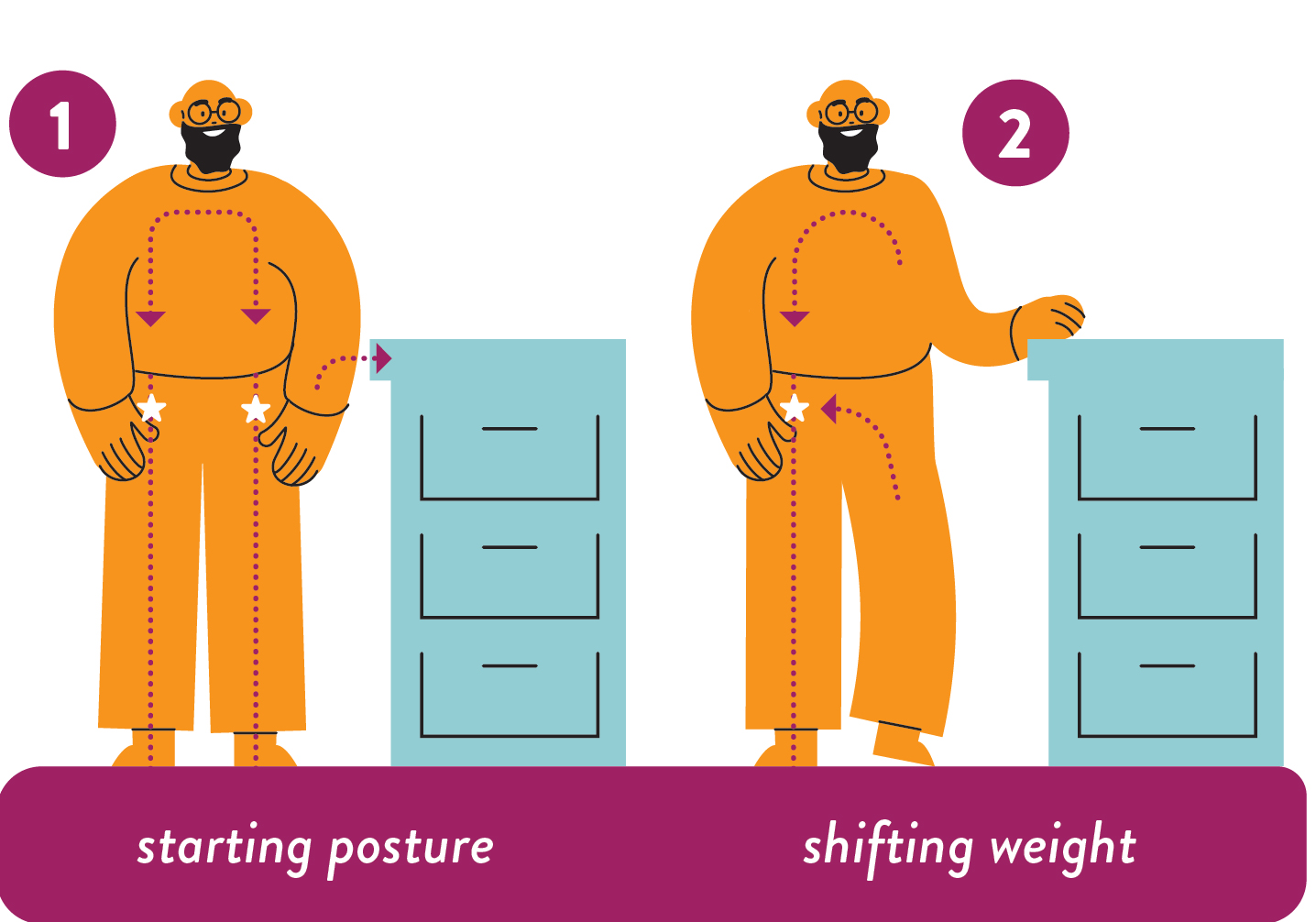
Weight Shifts
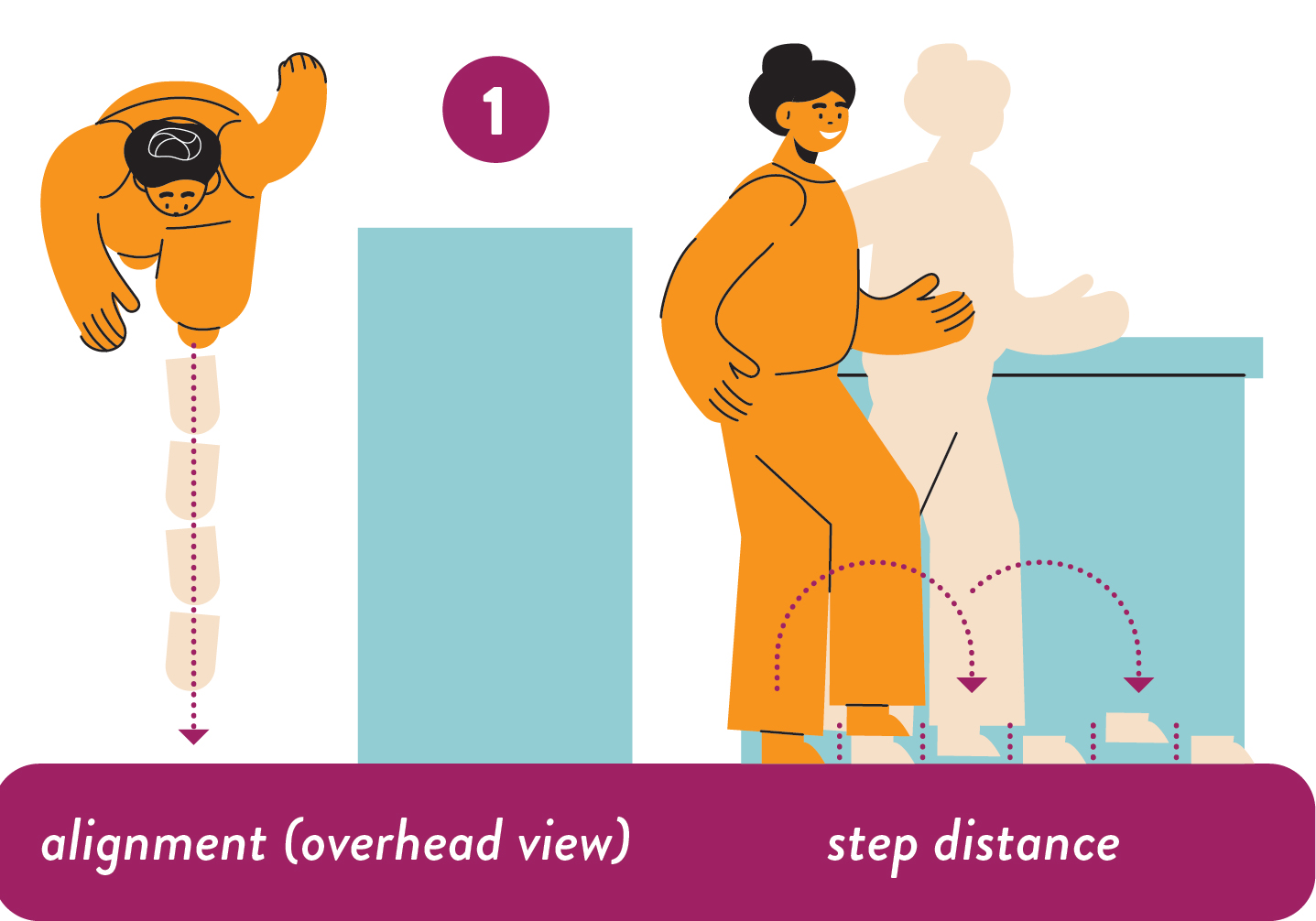
Tandem Walk
Strength Exercises
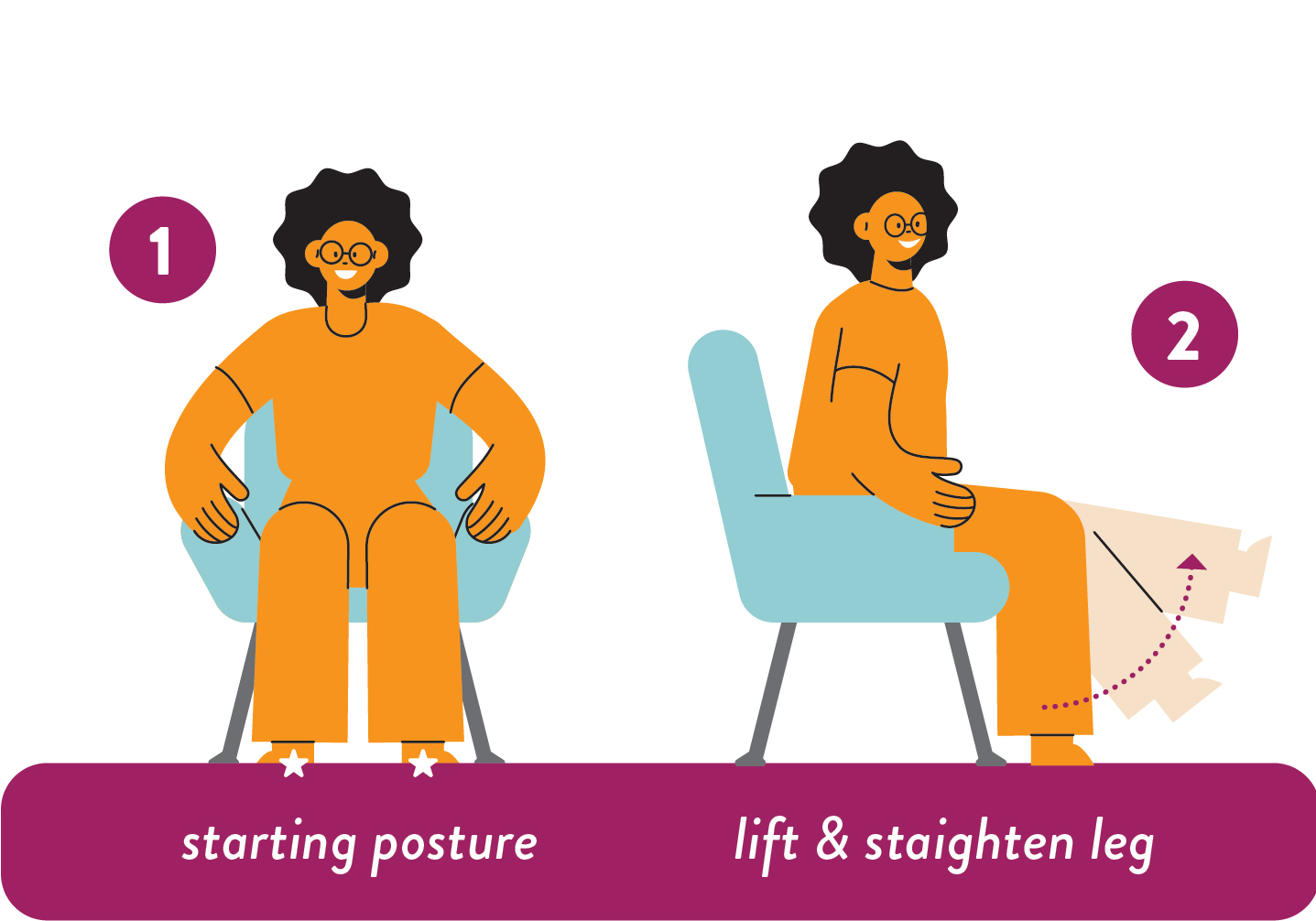
Leg Lifts
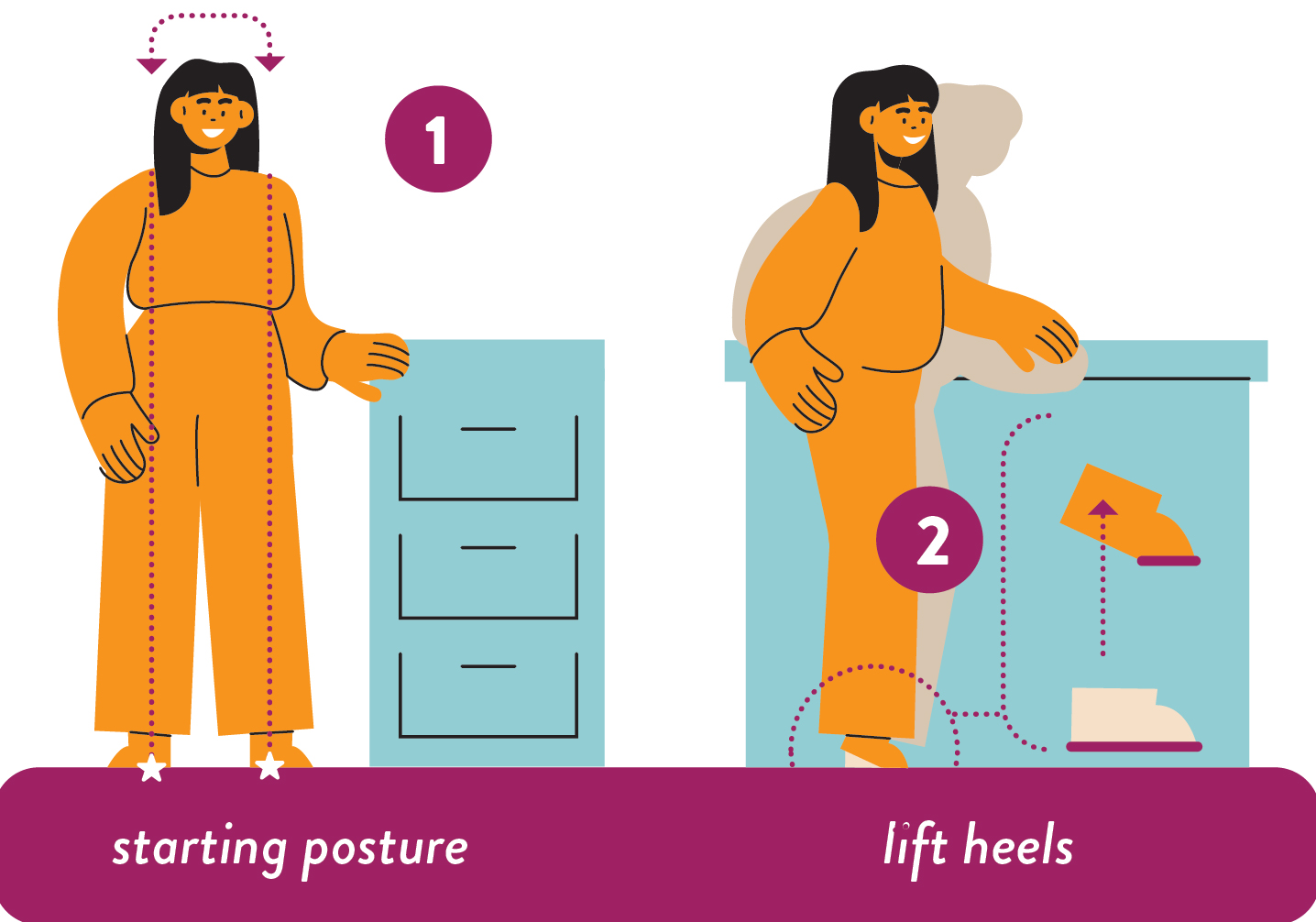
Heel Raises
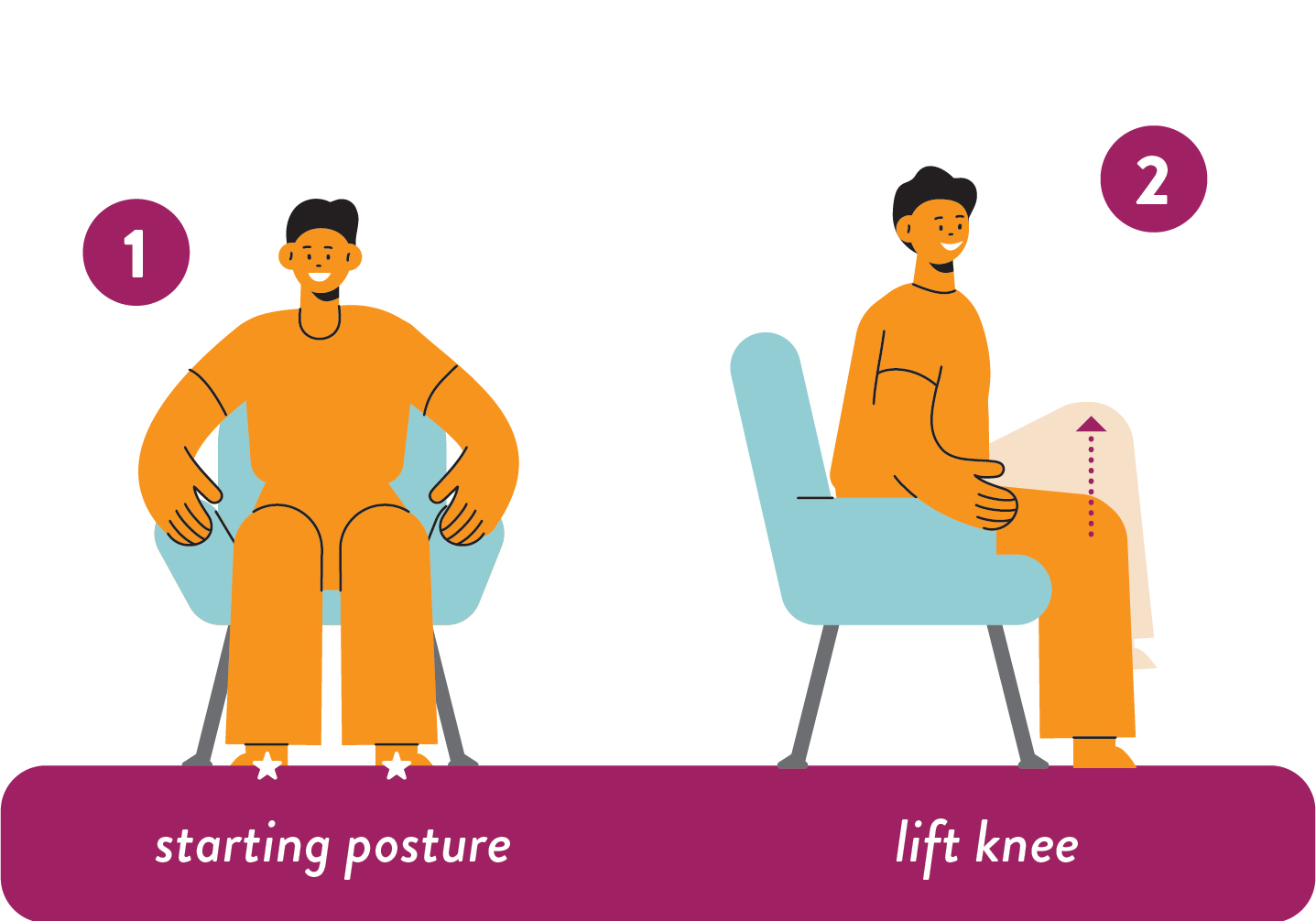
Hip Marches
Track your exercise with the Exercise Log!
Check out these webinars:
Watch the May 2024 webinar and hear from Exercise Physiologist on the importance of strength and balance.
Jim and I are really good at the buddy system. We look at each other and it’s like ‘yep, let’s just get up and do our exercises now’. So, we’ll go through the routine and the next day it’s like, ‘yep, let’s get up and do our exercises!’
Sue (age 69) & Jim (age 65)
Vilas County, WI
More Information:
I’m 94. They’re planning my 95th already! It’s very important to be mobile and practice some balance exercises. I do exercise classes three times a week at the senior center.
Libbie (age 94)
Brown County, WI
Balance is important for everyday activities and can be improved at any age with regular practice. These are just a few examples of balance exercises that you can incorporate into your daily routine to help reduce your risk of falling.
Exercise Examples
Simple exercises that can be done at home from Doubara Stucki, a Physical Therapist who works with older adults. Be sure to use a chair that is sturdy and doesn’t have wheels and have a sturdy table or counter without wheels for support.
Sit-to-Stand
Weight Shifts
Tandem Walk
Practicing balance exercises can help you reduce your risk for certain balance problems, but according to the National Institute on Aging, there may be other reasons why your balance is affected. Such as:
To reduce your risk of balance-related injuries, the National Institute on Aging suggests not walking in the dark, using safe shoes and, if necessary, use a cane or walker. Also, modifying your home can improve your safety and independence.
Our daily activities, like walking up and down stairs, getting up from a chair or bed and carrying things throughout your house require strong muscles. According to the National Institute on Aging, when your leg and hip muscles are strong, you are less likely to fall. You don’t have to lift super heavy weights in order to strengthen your muscles. In fact, you can do strength exercises right at home!
Exercise Examples
Simple exercises that can be done at home from Doubara Stucki, a Physical Therapist who works with older adults. Be sure to use a chair that is sturdy and doesn’t have wheels and have a sturdy table or counter without wheels for support.
Leg Lifts
Heel Raises
Hip Marches
Muscle strength can be increased at all ages! In just a couple of weeks of doing strength exercises, you may begin to notice a difference. Strength training increases muscle mass, strength, and density of bones which can reduce the risk of osteoporosis and reduce your risk of falling.
Join a Class
Joining an exercise class is a great way to stay accountable, meet new people, and have fun while improving your balance, strength, and physical fitness. Many communities have options for group exercise classes that work on balance and strength exercises that meet regularly. Look for a Stepping On or Physical Activity for Lifelong Success (PALS) class in your area by clicking on the button below, or to find a Stepping On, PALS or other exercise class near you, contact your local Aging & Disability Resource Center, County Extension Office, Local or Tribal Health Department, gym or fitness center, or County Parks and Recreation Office. Your provider or physical therapist may also know of some local options.
My girlfriend had asked me for about two years to exercise, ‘Barbara come to exercise’. Well finally after two years of her asking me that almost every time she saw me, I went and so she said she had created a monster. I take all the classes.
Barbara (age 77)
Milwaukee County, WI
Share this page’s information with others via the page download:

